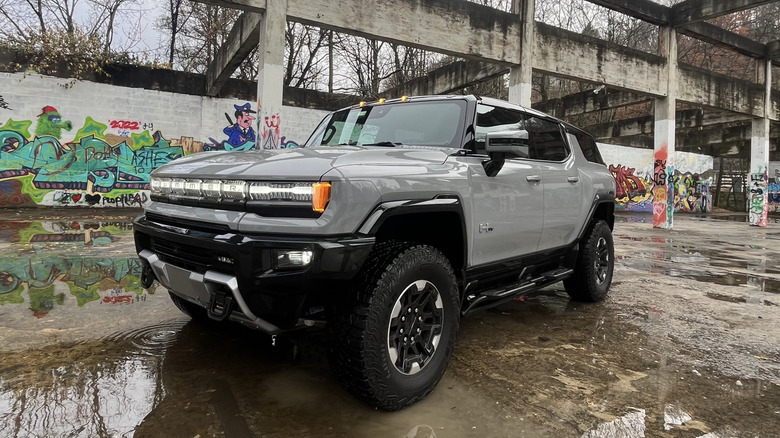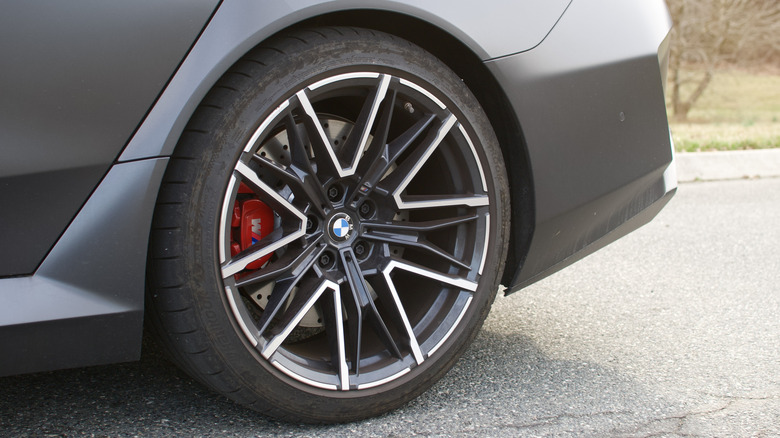No, AWD Won't Prevent Hydroplaning: Here's What You Need To Know
All-wheel drive is a useful feature on a great number of cars at all price points – some AWD's are under $10,000, — but it's sometimes touted as the solution to all traction-related driving problems, and that couldn't be further from the truth. When all four wheels are receiving power, it can absolutely help in staying connected to the road surface, but it's by no means the entire equation. Hydroplaning, as you may know, is when a thin layer of fluid (rainwater, a puddle, oil, etc) gets between your tires and the road surface and limits traction. It can be dangerous if not reacted to correctly and can cause you to lose control of your car.
Having a car with all-wheel drive does not completely eliminate the chance of hydroplaning. What's more important is your driving skill, tire choice, and making the right decisions behind the wheel. All of the most advanced traction control systems and all-wheel drive power trains in the world can't prevent you from being negligent behind the wheel when you hydroplane. In the skill department, you don't need to be a professional rally driver to feel confident while driving in inclement weather.
AAA notes that maintaining a cautious speed and leaving enough distance to brake in emergencies is one of the best practices you can adopt, no matter what drive system your car is equipped with. Additionally, turning sharply and stomping on the brakes is a bad idea. All-wheel drive doesn't prevent any of that from happening. If you do start to slip, stay calm, refrain from making any jerking movements on the brakes or steering wheel, and do your best to keep the car steady.
Your tire choice matters
The effect of a good set of tires is often overlooked. Good rubber can not only help performance but also ensure you stay in control of your vehicle when it's raining. Bridgestone recommends that you get an eye on your tire's tread depth and keep up to date on tire rotations and balancing. This advice, of course, applies to everyday driving and not just when it rains.
Keeping a healthy tread on your tire and making sure it wears evenly keeps your car in proper contact with pavement. More surface area gives you better control. All-wheel drive can certainly help with that, but tires are a much more important aspect. Bridgestone itself recommends "Touring" tires for daily, year-round use.
There are plenty of front-wheel drive or rear-wheel drive cars and trucks on the road today that have no problem driving in the rain. That's because the tires are appropriate, and the drivers are making the right choices. Additionally, If the driving conditions don't feel safe, there is absolutely no shame in refraining from driving entirely. A skilled driver and perfect tires are no match for hazardous weather, all-wheel drive or not.

